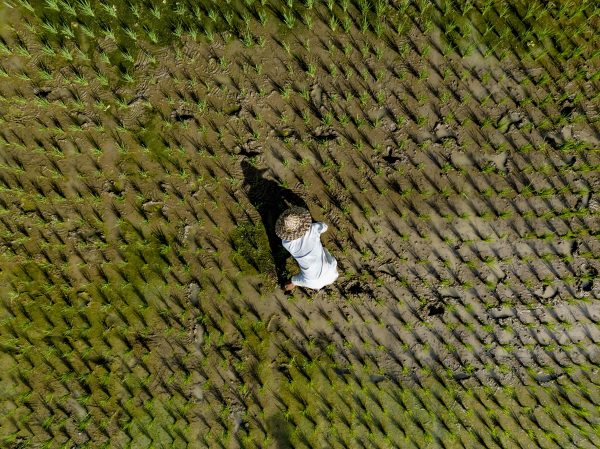While ASEAN’s staple food is rice, there has been increased demand for wheat, soybean and maize over the past decade — an increase that ASEAN production cannot meet. Soybean and maize have become particularly important as animal feeds needed to support an exponential growth in livestock demand. Meeting this demand requires large imports from outside ASEAN.
Food insecurity has highlighted ASEAN’s vulnerability to disruptions in the importation of foodstuffs. Several states are now prioritising localised production and shorter, more reliable supply chains. The ASEAN Secretariat estimated that ASEAN imported US$61 billion worth of agricultural commodities from outside ASEAN in 2020. ASEAN states are among the world’s largest importers of wheat and import significant amounts of soybean and maize.
This reflects ASEAN’s insufficient production of the region’s main foodstuffs. ASEAN member states differ widely in their production capacities of rice, wheat, soybean, maize, vegetable oil and livestock. In 2020, ASEAN produced an underwhelming 46 million tonnes of maize, 735,000 tonnes of soybean and 113,400 tonnes of wheat. ASEAN maize production meets about 75 per cent of the region’s needs because of the relatively low production compared to the major maize exporting countries in North America, South America and Europe.
ASEAN produces less than a tenth of its soybean needs. ASEAN soybean production is concentrated in Indonesia, Myanmar, Vietnam, Cambodia and Thailand. Between 2018 and 2019, ASEAN member states imported about 7.5 million tonnes of soybean for animal feed and food. Soybeans have the largest dollar value of any ASEAN food import and imports exceed local production by a ratio of 10:1.
ASEAN accounted for 15 per cent of global wheat imports in 2021. Wheat imports exceed production in ASEAN by a whopping ratio of 244:1. The majority of imported wheat is from Ukraine, so the Russia–Ukraine war has unsurprisingly disrupted the export of wheat to Southeast Asia and caused prices to spike.
Indonesia is the biggest wheat importer in ASEAN. In 2021, Indonesia imported US$3.5 billion worth of wheat. Wheat imports are used to produce Indonesia’s staple foods, including noodles, bread and baked goods. The country has total reliance on wheat imports for its food and animal feed.
Rice is the only staple food that ASEAN produces a surplus of. In 2020, ASEAN grew 48 million hectares of paddy rice, which harvested 191 million tonnes of rice. Rice production takes up about 66 per cent of the total arable land area in ASEAN. But many ASEAN states are still net rice importers, with Indonesia and the Philippines importing the most.
In 2020, ASEAN states imported 76.5 per cent of their rice from other ASEAN member states. ASEAN countries clearly need to work together and to develop a coordinated strategy to reduce the region’s dependency on food imports. Increasing rice production may enable the region to become a net exporter of rice, strengthening its position in the face of another food security crisis.
Increasing rice production will require a combination of technological innovations. This includes transitioning to biotechnology-improved rice, increasing on-farm yields of preferred rice varieties, infrastructural improvements, input financing and improved smallholder farmer management skills.
But the large area taken up by rice production and the need to increase rice production raise concerns about its environmental impact. Rice crop lands are the largest contributors to ASEAN’s methane emissions. Policymakers must balance the need to reduce global warming with increased rice production.
Soybean and wheat crop lands are still relatively scarce in ASEAN, making the gap between imports and production very large. Increasing crop lands and yields will require a coordinated strategy. There must be significant investment in the tropical soybean and wheat agronomy, including breeding and crop pest management. New soybean and wheat varieties need to be made available expeditiously by implementing innovative breeding technology and improving pest management.
A well-resourced, ASEAN-wide initiative may increase the region’s wheat, soybean and maize supply resilience. This will enable ASEAN to capitalise on its biodiversity and under-utilised native plants to reduce its reliance on imported staple food and feed crops.
Paul Teng is Adjunct Senior Fellow and Food Security Adviser at the Centre for Non-Traditional Security Studies in the S. Rajaratnam School of International Studies, Nanyang Technological University.
A version of this article was first published here in the S Rajaratnam School of International Studies Commentary.

